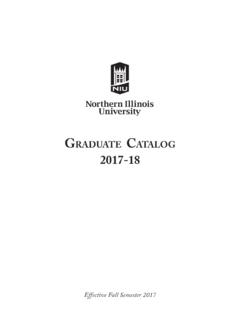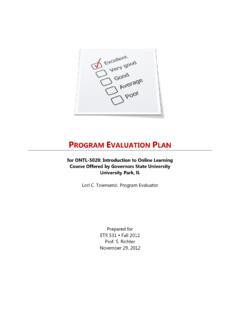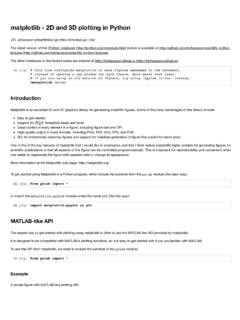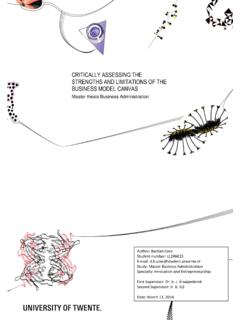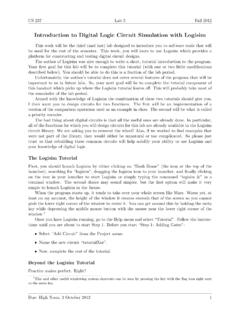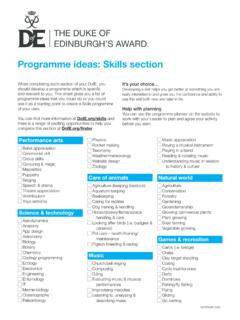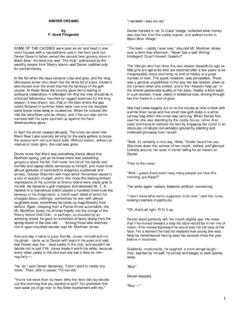Transcription of Social Protest in Art - Northern Illinois University
1 1 Social Protest in Art Author: Jennifer Rose Hasso, Art History Professor, Harold Washington College, Triton College Time: 80 minutes Overview: Artists play a major role in illuminating, challenging, and critiquing injustices that impact the Philippines. Artists provide a voice for the voiceless and have the ability to reach the masses through their vision. Human rights art has utilized direct messages during more tolerant eras, or has been embedded allegorically when imagery was strictly controlled. Artists inform our understanding of Philippine aesthetics as a set of values that are changing and growing as socio-political, socio-economic, and socio-religious issues continue to influence artists. Objectives: Understand the similarities and differences between works of art. Understand the relationship of art history to other histories. Identify historical events that have contributed to the evolution of the arts.
2 Develop observational abilities in order to critique visual art. Justify personal and non-personal critiques of art and architecture. Gain an overall academic awareness through the study of the fine arts. Outcomes: Analyze the relationship between visual art and human rights. Connect human rights to larger Social and cultural issues and movements. Understand how artists critique and challenge history and cultural conventions. Analyze the impact that artists have on improving the lives of those around them and society at large. Background Information: Political themes have a long history in Philippine art starting in the 19th century. Centuries of foreign control over the Philippines have benefitted many political dynasties. This has led to corruption, nepotism, and rampant abuse of citizens in the name of gaining and retaining power for a select few. The press, international watchdog agencies, historians, and artists have documented this corruption.
3 While the Philippines has progressive human rights legislation, but those laws are often ignored or weakly enforced. Corruption has led to a high percentage of poverty and lack of resources being channeled into the rural areas. Large numbers of indigenous peoples are abused or discriminated against with little government assistance. Additionally, there are problems getting educational resources where they are needed the most. Starting in the 1970s, the emergence of People s Art and Social Realist movements shaped art that was overtly critical of the government and foreign influences. Artworks were made in direct response to the Marcos patronage. The country underwent major financial and 2 political crises culminating in the imposition of Martial Law, and Social unrest began to spread in many parts of the country. Student activism and Communist and Muslim separatist movements also grew, and these developments did not go unnoticed by artists.
4 The fall of the Marcos regime eased the pressure of Social unrest and proliferation of Protest art. The need for a redefinition of Social and racial identity led artists to explore the ideological basis of life in the Philippines. Artists challenged national history, the basic concepts of art (rejecting Western aesthetics), explored indigenous and folk art, and sought to create a unique Filipino expression. One group of Social realists, the Kaisahan (Unity) group, created a large body of political art. In 1975, fourteen artists formed Kaisahan. The Kaisahan manifesto of 1976 states their major aims: to create art in the quest of national identity, to create art for the masses, to create alternative and oppositional art, base aesthetics on reflection theory, to create a relationship between form and content, to not limit style, to disseminate and expose as many people to their art as possible, and to create art that enacts Social and political change to enable the building of a humane and just society for all.
5 Some themes of the Social realists: the Revolution of 1896, the three evils of society (feudalism, bureaucratic capitalism, imperialism), the anti-imperialist struggle, the struggle against feudalism and exploitation of farm workers, the struggle of tribal peoples, militarism and human rights violations, the threat to ecological balance, the theology of liberation, the plight of migrant workers, feminist themes, media censorship, and the growth of the mass movement. Visual Art Slides: Pablo Baens Santos, Comprador, 1978, Oil on canvas, NAGM, Manila (Figure 1B) Baens Santos (b. 1943) is a graduate of the University of the Philippines and a Social realist. Comprador depicts two politicians in suits at the top of the composition with money passing through their outstretched hands. The politicians, one from the Philippines and the other from the United States, stand on the backs of the workers profiting from their labor.
6 They laugh as a group of Filipino workers toils below, their struggle represented by bold, angular lines, a restrained color palette, and a strong diagonal pull across the composition. A large green dollar sign is located in the upper right corner, affirming that the politicians are only interested in money. Pablo Baens Santos, Congratulations to the Liberal Democrats, 1986, Oil on canvas, NAGM, Manila (Figure 2B) Congratulations to the Liberal Democrats depicts a woman celebrating a political victory in the center of the composition. She hovers in front of a banner held by two identically dressed male citizens, while a crowd of supporters celebrates below. She is an embodiment of the Philippine flag; the top of the composition captures exuberance of the celebration through form and color. Below her are menacing faces mocking the woman as if her victory won t last.
7 3 Orlando Castillo, Justice Under Martial Law, 1980, Pastel on paper, NAGM, Manila (Figure 3B) Castillo (b. 1947) was a founding member of the Concerned Artists of the Philippines. Justice Under Martial Law is a narrative about abuse under Marcos. He stands in the center with one hand raised in a gesture of militancy; his other had holding a gavel, his body cloaked in an American flag showing where his true interests lie. Behind him is the abuse of Filipinos at the hands of the police and military. There are also figures living in poverty due his corrupt administration. The composition is packed with figures, yet shows restraint in color, as if they have been stripped of their humanity. Marcos is the only figure with vibrant color, coming from the American flag and from a halo resembling an exploding bomb behind his head. Papo de Asis, Bondage, 1990, Oil on canvas (Figure 4B) Asis (b.)
8 1949) is a Filipino artist and activist. When Martial Law was declared he left the Philippines and his art took on a political scope. He condemned human rights violations and called for independence and democracy in the Philippines. He founded Habi Arts, a collective of artists in committed to progressive Social change. Bondage depicts a man trapped inside of a concrete structure with a large eagle on top, and teetering on rocks at the bottom. The eagle symbolizes democracy and imperialism. Below the mass is a skull and bones and the grim reaper rides a horse in the distance. A woman walks away from the trapped man down a desolate shoreline symbolizing isolation. Antipas Delotavo, Dama II, 1994, Oil on canvas, NAGM, Manila (Figure 5B) Delotavo (b. 1954) is a Filipino artist that studied at the Philippine Women s University and was as an original member of Kaisahan.
9 His art reveals the harsh realities experienced by Filipinos and enlightens the public about the impact of poverty, oppression, and injustice. Dama II depicts assault rifles, machine guns, and handguns set against a grid pattern, as if they are hanging off hooks on a wall or protruding through a chain link fence. A face appears to the right, and a pair of hands grips an assault rifle to the left. It is unclear whether they are fighting for the same cause, or if one is the abuser and the other the victim. The main focus is on the guns and the message of violence, pain, and death they bring. Salingpusa Collective, Karnabal, 1992, Acrylic on canvas, Pinto Museum, Antipolo (Figure 6B) Social realism resurfaced in the 1990s with Salingpusa, a collective of young artists who introduced a method of interactive mural painting. Salingpusa created large murals representing Social ills like dread, isolation, and disconnectedness.
10 Karnabal represents local and foreign influences on Philippine culture in a nightmarish manner. Figures are bulky and distorted, arranged in a composition that tilts downwards, forcing them into viewer space. They are exaggerated and overwhelmingly colorful. A carnival was utilized to register the artists dissatisfaction with divisive socio-political realities that deflated euphoria following Martial Law. 4 The composition is sinister; a woman levitated by a magician (controlling her), a straw man pointing to the wheel of fate (even though he is unwise), and a figure resembling Superman throwing a ball at the Virgin Mary (triumph of pop culture over traditional values). There is a game where toy soldiers shoot people (massacre of farmers), dolls in Filipina costumes in a wheelbarrow (exportation of women to foreign countries), a priest hearing confession from a clown, and Darna (local Wonder Woman) as a pole dancer.





